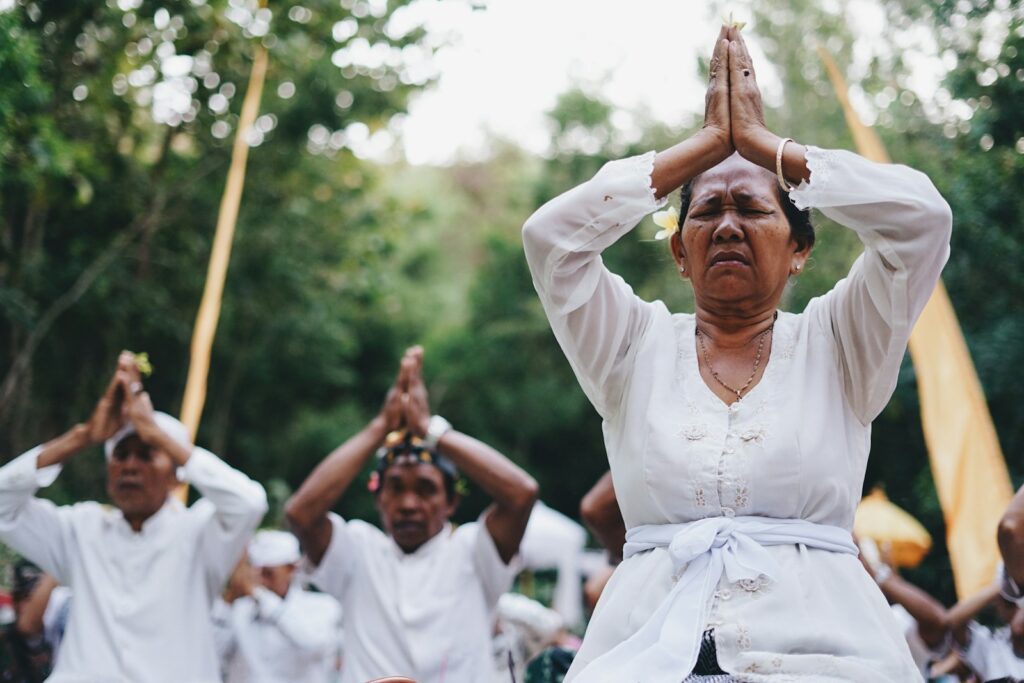In our increasingly connected world, international travel offers incredible opportunities to explore diverse cultures, traditions, and ways of life. However, navigating cultural differences requires more than just a passport and an itinerary—it demands awareness, respect, and adaptability. Cultural etiquette varies dramatically across regions, and what’s perfectly acceptable in one country might be deeply offensive in another. Whether you’re a seasoned globetrotter or planning your first overseas adventure, understanding these nuances can transform your experience from that of a typical tourist to a respectful and welcomed visitor. The following twelve tips will help you navigate cultural differences with grace, deepen your travel experiences, and foster meaningful connections across borders.
Research Local Customs Before Arrival

Before stepping onto foreign soil, dedicate time to understanding the basic cultural norms, taboos, and expectations of your destination. This preliminary research provides essential context that will help you avoid unintentional offense and demonstrate respect from the moment you arrive. Consider reading travel guides specific to the region, following local bloggers, or even watching documentaries about the area to gain authentic insights. Many countries have specific gestures, clothing requirements, or behavioral expectations that might seem insignificant to outsiders but carry deep cultural significance for locals. Remember that this research isn’t just about avoiding faux pas—it’s about showing genuine interest in and respect for the culture you’re about to experience.
Master Basic Greeting Protocols

First impressions matter across all cultures, making appropriate greetings one of the most important aspects of cultural etiquette to understand. In some countries like Japan, a respectful bow is expected, while in parts of Europe, cheek kisses (varying from one to three depending on the country) are the norm. In many Middle Eastern and Asian countries, there are specific protocols regarding whether to shake hands with the opposite gender. Learning a few greeting phrases in the local language—even if it’s just “hello,” “thank you,” and “pleased to meet you”—can open doors and hearts. Pay attention to local customs regarding eye contact, physical proximity, and the use of first names versus formal titles, as these subtle elements of greeting etiquette can significantly impact how you’re perceived.
Observe Appropriate Dining Etiquette

Sharing meals is a universal bonding experience, but table manners vary dramatically across cultures. In some Asian countries, slurping noodles or soup is a compliment to the chef, while in Western settings, it might be considered impolite. Before dining out or accepting a meal invitation, familiarize yourself with local eating customs—whether meals are eaten with hands, chopsticks, or specific utensils. Be aware of seating arrangements, which can be hierarchical in many cultures, and wait for cues from your host about when to begin eating. Understanding tipping practices is equally important, as leaving a tip is expected in countries like the United States but might be considered offensive in places like Japan. When in doubt, observe what locals do and follow their lead with a humble attitude.
Dress Respectfully According to Local Standards

Your clothing choices communicate volumes about your respect for local customs, particularly when visiting religious sites or conservative communities. Many sacred places worldwide require covered shoulders, knees, and sometimes heads, regardless of the weather or your personal comfort. Research specific dress codes before packing and bring versatile items like lightweight scarves or wraps that can be used to cover up when necessary. Beyond religious considerations, different cultures have varying standards of modesty and formality in everyday settings. What might be casual beachwear in your home country could be deeply inappropriate in public spaces elsewhere. Observing how locals dress for various occasions and adapting your wardrobe accordingly demonstrates cultural sensitivity and helps you blend in rather than stand out as an oblivious tourist.
Learn Basic Language Phrases

Making an effort to speak even a few words in the local language can transform your travel experience and how locals perceive you. Simple phrases like “please,” “thank you,” “excuse me,” and “do you speak English?” demonstrate respect and humility, even if your pronunciation isn’t perfect. Locals often appreciate the effort more than the accuracy, recognizing it as a sign that you value their culture enough to step outside your linguistic comfort zone. Downloading a translation app or carrying a pocket phrasebook can help in moments when communication becomes challenging. Remember that in many non-English speaking countries, speaking louder doesn’t help overcome language barriers—it can actually come across as condescending or rude. Instead, patience, gestures, and a willingness to laugh at your own linguistic missteps will take you much further than volume.
Understand Sacred Spaces and Religious Customs

Religious sites worldwide welcome visitors but expect appropriate behavior that honors their spiritual significance. Before visiting temples, churches, mosques, or other sacred spaces, research specific protocols regarding photography, speaking volume, appropriate attire, and areas that may be restricted to practitioners only. Many religious sites have specific entry procedures, such as removing shoes, covering hair, or walking in a particular direction. In some places, visitors of certain genders may be restricted from entering specific areas or may need to visit at designated times. During religious ceremonies or prayer times, maintain a respectful distance and avoid disrupting worshippers with loud conversations or flash photography. Remember that for locals, these aren’t tourist attractions but places of deep spiritual significance—your respectful behavior acknowledges and honors this reality.
Recognize and Respect Personal Space Differences

Personal space expectations vary significantly across cultures, influencing everything from how closely people stand when conversing to physical contact norms in social settings. In North America and Northern Europe, people typically maintain a larger personal bubble, while Mediterranean, Middle Eastern, and Latin American cultures often embrace closer proximity and more physical contact during conversations. These differences can lead to discomfort when travelers misinterpret space norms—what feels friendly and warm to someone from Brazil might feel invasive to a visitor from Finland. Be observant of how locals interact with each other and adjust your behavior accordingly. If you find yourself uncomfortable with closer proximity than you’re accustomed to, try to adapt gradually rather than creating obvious physical distance, which could be interpreted as rejection or disgust in more contact-positive cultures.
Navigate Gift-Giving Customs Carefully

Exchanging gifts is common in many cultures, especially when visiting someone’s home or conducting business, but the protocols surrounding this practice vary widely. In some Asian cultures like Japan and China, gifts should be presented with both hands and may be refused several times before acceptance (which is expected etiquette, not actual rejection). The timing, presentation, and choice of gift all carry cultural significance—certain colors, numbers, or items may be considered unlucky or inappropriate in different regions. Research culture-specific taboos before selecting gifts; for instance, clocks in China, sharp objects in many countries, and alcohol in Muslim regions are generally inappropriate. When receiving gifts, observe local customs regarding whether to open them immediately or later in private, and always express gratitude appropriately according to local norms.
Understand Tipping and Payment Customs

Financial transactions carry their own set of cultural expectations that can be particularly challenging for travelers to navigate. Tipping practices vary dramatically—from the expected 15-20% in the United States to being potentially offensive in Japan, where excellent service is simply considered part of the job. In some countries, haggling is an expected part of the purchasing process, while in others, it would be considered inappropriate and disrespectful to the vendor. Familiarize yourself with local payment customs before your trip, including whether cash or cards are preferred and if bargaining is appropriate in different settings. When haggling is customary, remember that the goal is a fair price that respects both your budget and the merchant’s livelihood—aggressive bargaining that drives prices to unsustainable levels harms local economies and reinforces negative stereotypes about foreign visitors.
Practice Appropriate Photography Etiquette

In our social media-driven world, capturing travel experiences through photography is nearly universal, but cameras should be used with cultural sensitivity. Always ask permission before photographing individuals, particularly in cultures where there may be spiritual beliefs about photography capturing one’s soul or essence. Be especially respectful when photographing children—approach their parents or guardians first, regardless of how cute or photogenic the scene might appear. Many religious sites, museums, and cultural ceremonies prohibit photography entirely or require special permissions or fees, rules that should be strictly observed regardless of how discrete you think you can be. Remember that what may seem like an exotic photo opportunity to you is often someone else’s daily life, religious practice, or sacred tradition—approach photography with humility and a genuine interest in understanding rather than just collecting visual trophies.
Respect Time and Scheduling Perspectives

Cultural attitudes toward time and punctuality differ significantly around the world, potentially causing confusion or frustration for unprepared travelers. In countries like Germany, Switzerland, and Japan, punctuality is highly valued, and arriving even five minutes late might be considered disrespectful. Conversely, in many Mediterranean, Latin American, and Middle Eastern cultures, time is viewed more fluidly, with social gatherings often starting significantly later than the stated time. Business meetings in different cultures may begin with varying amounts of social conversation before addressing agenda items, reflecting different priorities regarding relationship-building versus efficiency. Rather than judging these differences as right or wrong, recognize them as different cultural adaptations and adjust your expectations accordingly. Being flexible about time while still respecting local norms—whether that means strict punctuality or comfortable flexibility—demonstrates cultural intelligence and adaptability.
Approach Political and Historical Topics Sensitively

Many destinations have complex political histories or current situations that require thoughtful navigation by visitors. What might seem like casual conversation topics to you could touch on deeply painful historical wounds, ongoing conflicts, or politically sensitive issues for locals. Before engaging in discussions about politics, historical events, or regional disputes, develop a basic understanding of the context and be prepared to listen more than speak. Avoid making comparisons between the host country and your home country that could be interpreted as judgmental or suggesting superiority. Remember that as a visitor, you’re experiencing a brief snapshot of a complex society, and locals have nuanced perspectives shaped by lived experiences that you may not fully comprehend. When controversial topics do arise, approach them with genuine curiosity, humility, and a willingness to learn rather than debate or impose your viewpoint.
Embrace Adaptability and Cultural Humility

Perhaps the most important cultural etiquette skill is maintaining a flexible mindset and practicing cultural humility throughout your travels. Even with thorough research, you’ll inevitably encounter unexpected customs or make inadvertent missteps. How you respond to these moments—with defensiveness or with gracious adaptation—significantly impacts your experience and how you’re perceived. When corrected about a cultural practice, respond with gratitude rather than embarrassment or justification. Observe how locals navigate their environment and be willing to temporarily set aside your own cultural programming to experience different ways of being. Cultural humility involves recognizing that no culture is inherently superior to another—just different—and approaching these differences with respect and curiosity rather than judgment. This mindset transforms potential cultural clashes into opportunities for genuine connection and personal growth.
In our globalized world, responsible travel extends beyond environmental consciousness to include cultural respect and awareness. These twelve etiquette guidelines provide a foundation for meaningful cross-cultural experiences, but the most important elements remain an open heart and mind. By approaching new cultures with genuine curiosity, humility, and respect, you transform yourself from a mere tourist into a thoughtful global citizen. Remember that perfect cultural fluency isn’t the goal—rather, it’s the sincere effort to understand and honor different ways of life. When inevitable mistakes occur, respond with grace and a willingness to learn. The connections you’ll forge through culturally respectful travel will not only enrich your adventures but also contribute to greater cross-cultural understanding in our beautifully diverse world.

